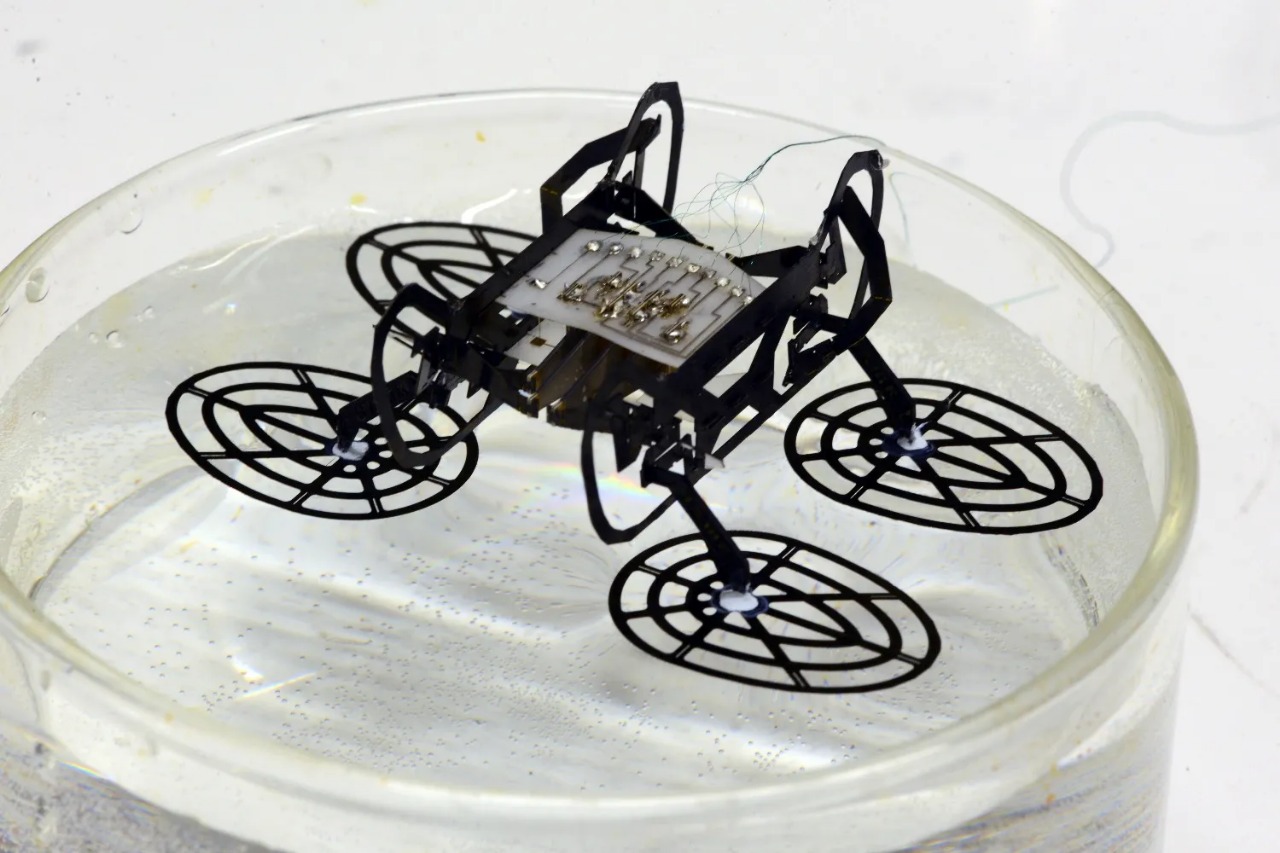
Follow WOWNEWS 24x7 on:

Scientists have developed a revolutionary insect-scale robot inspired by a tiny water bug known as the ripple bug (Rhagovelia). This bug’s unique wing-like fans on its feet enable it to move with incredible speed and maneuverability on water surfaces. The breakthrough robot mimics this natural propulsion system, offering exciting possibilities for energy-efficient and highly agile miniature aquatic robots.
Key Highlights Of The Ripple Bug Inspired Robot
Ripple bugs use a natural mechanism where their feet fan out underwater, working like oars to propel and steer, collapsing again when lifted to reduce drag.
The robotic version, named Rhagobot, uses self-morphing fans on its legs that expand and contract without motors, relying solely on the forces of water surface tension.
Rhagobot weighs just one-fifth of a gram and moves at speeds of two body lengths per second, capable of sharp 90-degree turns in less than half a second.
The robot can navigate turbulent water environments with insect-like dexterity, controlled through highly efficient, passive mechanical fans inspired by nature.
Researchers from Ajou University, University of California Berkeley, and Georgia Institute of Technology pioneered this design, blending biology, engineering, and materials science.
Electron microscopy revealed that the bug’s fans consist of flat, ribbon-like strips with tiny barbs, conferring rigidity for propulsion and flexibility for retracting, a biomechanical marvel.
The study published in Science highlights how this structural design can overcome miniaturization limits in robotics by embedding mechanical intelligence into tiny devices.
Applications include environmental monitoring in rivers, search and rescue operations in flooded areas, and scientific exploration of aquatic ecosystems.
The research also observed that ripple bugs create unique water vortices reminiscent of wing-flapping in air, possibly adding lift-based propulsion to their capabilities.
Why This Breakthrough Matters
The development of Rhagobot pushes the boundaries of micro-robotics by harnessing principles evolved in nature over millions of years. It provides a template for future tiny robots that need to move efficiently in dynamic and challenging watery environments, with minimal energy input and maximum control.
The robot’s passive, fast-responding fans represent a leap forward in creating autonomous aquatic devices that mimic real insect mobility and could revolutionize how we monitor and interact with environmental habitats.
Looking Forward
Scientists continue to study the ripple bug’s propulsion mechanics to refine robotic designs further, aiming to incorporate lift generation and enhance agility. With such advances, miniature robots could soon perform critical tasks in disaster zones, agriculture, and natural resource management with unprecedented precision.
Conclusion
Inspired by the humble ripple bug, this insect-sized robotic marvel exemplifies how nature’s engineering can guide futuristic technology. The successful creation of the Rhagobot opens avenues for compact, efficient, and versatile aquatic robots, signaling a new era in environmental tech and bio-inspired robotics.
Sources: University of California Berkeley, Ajou University, Georgia Tech, Science, Korea.net, Science News




